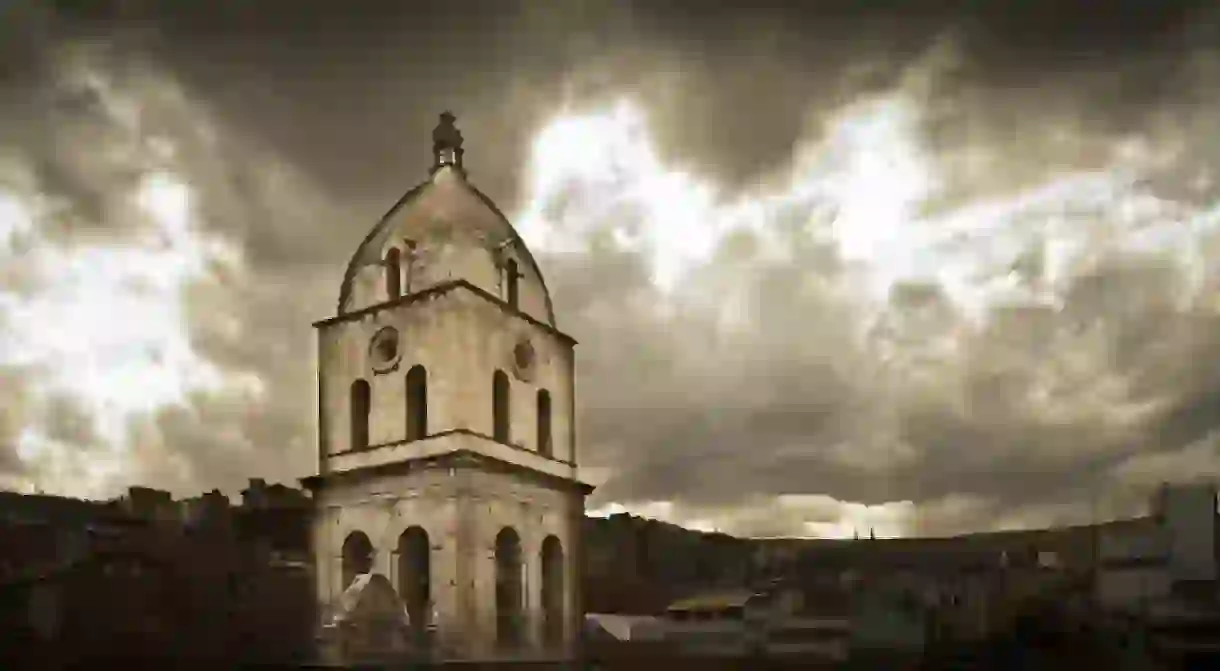The Most Impressive Buildings in La Paz, Bolivia

As the administrative capital and home of the country’s most important government ministries, La Paz has a number of impressive buildings that are worthy of a visit. From colonial era churches and bus stations to government palaces and apartment blocks, let’s take a look at the most impressive buildings La Paz has to offer.
Basílica de San Francisco
Church, Monastery

Right in the heart of La Paz is the mammoth San Francisco Basílica, a landmark church that serves as one of the most significant houses of worship in the city. The church was built in the 18th century over a period of 10 years by Aymara workers whose influence led to the inclusion of indigenous symbols such as snakes, birds and dragons that paid homage to the Tiwinaku and Inca empires. The exterior was constructed in a baroque mestizo style, while the interior is more neo-classical and contains a mix of both indigenous and Catholic artwork. Entry to the church is free, although those wishing to enter the monastery, bell tower and catacombs must pay BOB35 (US$5) which includes a guided tour in either English or Spanish.
Catedral Basílica Menor de Nuestra Senora de la Paz
Building, Cathedral, Church

The city’s other great church can be found on the corner of Plaza Murillo, La Paz’ official central plaza. Construction began in the 1620s and took over 70 years, although it was not to last. Due to poor construction methods and materials, dangerous cracks started to appear so the decision was made to knock it down and start again from scratch in 1831. The new church officially reopened in 1925 to mark the centenary of independence, although work was far from finished. It wasn’t until 1989 that the building was finally completed, more than 150 years after construction began. The end result is rather magnificent, though, featuring high domed ceilings and sturdy pillars built in a neoclassical style. One of the more remarkable features is an intricate stained glass window that depicts Bolivian politicians receiving divine intervention from God – rather poignant considering the country’s turbulent past. The church is open to the public every day, but photos are not permitted.
El Palacio de Gobierno
Building, Cathedral

Right next door to the cathedral is Bolivia’s Government Palace, affectionately known as El Palacio Quemado (The Burned Palace) because it was almost burnt to the ground during a violent revolution in 1875. As the official residence of the president, the building has seen a lot of history since its construction in 1825. A number of serving presidents have died here by way of suicide, assassination or death by lynch mob, the most famous of which was Gualberto Villarroel who was dragged into Plaza Murillo by an angry mob and hung from a lamppost. Despite its sordid history, the neoclassical structure is pleasing to the eye, featuring bright pink colored walls that contrast with the white pillars and awnings. The interior features all the grandeur you would expect from a presidential palace, although it is inaccessible to the public for obvious reasons.
Asamblea Legislativa Plurinacional
Library, University

The current Plurinational Legislative Assembly on Plaza Murillo was originally intended to be Bolivia’s Central Bank, but was later remodeled into a convent and then a university. These days it serves as the house of congress, where representatives from the upper and lower house make important decisions about the country’s future. It houses the congressional library and archive, although its most notable feature is an analogue clock on the exterior that runs backwards. This rather unusual modification was implemented in 2014 as a way to “recover Bolivian identity… and break away from the hegemony of the north.”
Wiphala Community Housing
Central Station
Building, Museum, Train Station

Almost all visitors to La Paz will pass through this huge domed building and probably won’t think anything of it. What most won’t realize is that this large, airy construction was originally designed as a train station by Gustave Eiffel (of Eiffel Tower fame). Eiffel designed a number of buildings throughout South America, including La Paz’ Museum of Contemporary Art.













